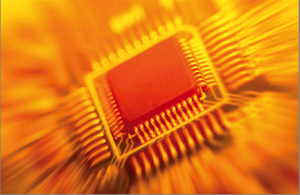Global Avionics Round-Up from Aircraft Value News (AVN)

In the world of aerospace innovation, buzzwords like artificial intelligence (AI) and autonomous flight tend to dominate headlines. But beneath the radar (so to speak), a quieter revolution is reshaping the cockpit: Software-Defined Avionics (SDA) powered by Modular Open Systems Architecture (MOSA).
In April, the Taiwanese manufacturer TSMC introduced the world’s most advanced microchip: the 2 nanometre (2nm) chip. Mass production is expected for the second half of the year. TSMC’s new chip represents a major step forward in performance and efficiency, and it has been accompanied by similar announcements this year from other chipmakers. As I explain below, chip advancements like these are exponentially boosting avionics capabilities.
This shift isn’t just about replacing hardware; it’s about redefining how aircraft electronics evolve, interconnect, and stay relevant across several years of service.
For decades, avionics systems have been tightly coupled with hardware. Navigation systems, flight management computers, and display panels were all built with rigid, closed-loop configurations. Upgrades were cumbersome, expensive, and often involved extensive certification hurdles. SDA flips this script.
At its core, Software-Defined Avionics allows avionics functions to be implemented in software running on generic, modular hardware.
The separation of hardware and software enables updates without having to rip out and replace entire systems. MOSA complements this approach by establishing industry-wide standards for interoperability, making it easier for different manufacturers to develop plug-and-play components.
This approach brings several key benefits:
- Agility: Software updates can be deployed rapidly to address bugs, enhance functionality, or respond to new threats.
- Cost Efficiency: Operators can extend the life of airframes without needing to overhaul hardware.
- Interoperability: Different systems from different vendors can now communicate and integrate seamlessly.
Major aerospace and defense contractors including Raytheon, Collins Aerospace, and Northrop Grumman are investing heavily in SDA frameworks. The U.S. Department of Defense has even mandated MOSA compliance for future platforms, underscoring how strategic this shift is becoming.
In commercial aviation, the implications are just as profound. Airlines operating mixed fleets or legacy aircraft can now streamline training and maintenance while complying with evolving regulatory and operational demands. Rather than replacing entire cockpits, airlines can incrementally upgrade systems to support innovations like predictive maintenance or enhanced flight path optimization.
Critically, SDA supports the aviation industry’s push toward autonomous systems. As machine learning algorithms and sensor fusion become standard, software-defined platforms will provide the flexibility needed to integrate these technologies in real time without re-certifying every piece of hardware.
Ever-Faster Microchips
The advent of faster microchips is fundamentally transforming the landscape of SDA, offering significant enhancements in performance, integration, and flexibility.
As processing power increases, avionics systems are now capable of managing far more complex tasks in real time. This includes processing vast amounts of data from onboard sensors such as radar, Light Detection and Ranging (LiDAR), weather systems, and navigation tools with minimal latency.
These more powerful chips also make it feasible to run advanced algorithms and AI workloads directly onboard the aircraft—capabilities that previously required offloading to external systems or simplifying due to hardware limitations. As a result, features like real-time sensor fusion for autonomous taxiing or dynamic in-flight rerouting are no longer theoretical; they’re becoming operational realities.
Importantly, the rise of these advanced microchips also reinforces the growing adoption of open avionics architectures, such as the Future Airborne Capability Environment (FACE) and MOSA.
These standards depend on high-performance computing platforms that can handle interoperability without compromising speed or safety. As a result, the vision of truly plug-and-play avionics, where mission-critical apps and software modules can be deployed or updated across multiple aircraft platforms, is coming into focus.
The growing power and sophistication of microchips is the technological backbone driving the software-defined transformation of aviation. By pushing the boundaries of what can be done with software, these chips are making aircraft not only more capable and secure, but also far more adaptable to the evolving demands of 21st-century flight.
And yet, despite its transformative potential, SDA still receives scant media coverage. Perhaps it’s because it lacks the visual drama of flying taxis or the public appeal of net-zero emissions pledges. But for industry insiders, it’s clear: software is no longer just part of avionics. It is the avionics.
This article also appeared in our partner publication, Aircraft Value News.
John Persinos is the editor-in-chief of Aircraft Value News. You can reach him at: jpersinos@acccessintel.com